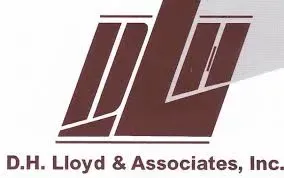See How We're Different
or call us: 202-223-1506
Understanding the Basics of Commercial Property Insurance
Commercial property insurance is a crucial safeguard for businesses, offering protection against various risks that could lead to financial loss. Understanding the fundamental aspects of this type of insurance is essential for business owners, as it can significantly impact their operations and financial health.
Definition and Importance of Commercial Property Insurance
Commercial property insurance is designed to cover the physical assets of a business, including buildings, equipment, inventory, and other property. This insurance is vital because it not only shields businesses from financial losses due to theft, vandalism, or natural disasters but also ensures continuity in operations during adverse events.
Business owners must recognize that without adequate insurance coverage, the financial burden of replacing lost or damaged property could be debilitating. Thus, understanding the significance of commercial property insurance helps in securing a safer future for businesses. Moreover, having this insurance can enhance a business's credibility with clients and partners, as it demonstrates a commitment to risk management and operational resilience.
Key Components of Commercial Property Insurance
Commercial property insurance typically comprises several key components, including coverage for buildings, personal property, business interruption, and additional liability. The building coverage protects the physical structure of the business premises, while personal property coverage safeguards inventory and equipment.
Business interruption coverage is particularly crucial, as it compensates businesses for lost income during periods when operations are halted due to covered events. Additional liability coverage can also be incorporated to protect against unforeseen litigation costs related to accidents on the business premises. Furthermore, many policies offer optional endorsements that allow businesses to customize their coverage, such as adding protection for equipment breakdown or coverage for valuable documents and records. This flexibility enables business owners to tailor their insurance to meet specific operational needs and industry requirements, ensuring comprehensive protection against a wide range of potential risks.
Factors Influencing the Increase in Commercial Property Insurance Rates
Numerous factors contribute to the yearly escalation of commercial property insurance rates. Understanding these influencing elements can provide insights into why businesses may face increasing costs and how they might proactively manage these expenses.
Economic Trends Impacting Insurance Rates
The broader economy plays a pivotal role in shaping insurance rates. Economic trends such as inflation, the economic cycle, and shifts in the labor market can directly influence the cost of insurance. For instance, an increase in construction costs driven by inflation can lead to higher valuations of insured properties, subsequently resulting in increased premiums.
Moreover, as businesses expand and the economy grows, insurers often reassess risks and adjust their rates accordingly. This cyclical nature of economics means that rates can fluctuate based on external market dynamics. Additionally, the rise of technology and e-commerce has transformed the commercial landscape, prompting insurers to evaluate new risks associated with cyber threats and data breaches, which can further complicate the pricing structure of insurance policies.
The Role of Natural Disasters in Insurance Rate Hikes
Natural disasters such as hurricanes, floods, and wildfires have been a consistent threat, particularly in states like Maryland. The increasing frequency and severity of these events can significantly impact insurance rates. Insurers often raise premiums to compensate for the heightened risk of claims in areas prone to such disasters.
Furthermore, as communities rebuild after disasters, construction costs can rise, which may also contribute to higher insurance rates. This correlation between natural disasters and insurance costs emphasizes the urgent need for businesses to assess their coverage needs regularly. In addition, the growing emphasis on climate change and its effects on weather patterns has led to a more proactive approach among insurers, who are now incorporating climate risk assessments into their underwriting processes, thereby influencing premium calculations.
Impact of Regulatory Changes on Insurance Costs
Regulatory changes at both state and federal levels can also influence commercial property insurance rates. New legislation aimed at increasing consumer protections or mandating higher coverage limits can create additional costs for insurers, which may ultimately get passed on to business owners.
Businesses must stay informed about regulatory trends that could affect their insurance premiums. This awareness can empower them to adapt their coverage strategies and mitigate potential increases in costs. Moreover, emerging regulations related to sustainability and environmental responsibility may require businesses to invest in greener practices, which could also affect their insurance premiums. Insurers are increasingly recognizing the value of sustainable business practices and may offer incentives or discounts for companies that demonstrate a commitment to reducing their environmental impact, thus creating a complex interplay between regulatory compliance and insurance costs.
The Specific Situation in Maryland
The commercial property insurance landscape in Maryland has its own unique set of challenges and opportunities, shaped by local market conditions and regional risks. Understanding Maryland's specific situation can provide businesses with tailored strategies for navigating this complex insurance environment.
Maryland's Commercial Property Market Overview
Maryland boasts a diverse commercial property market, characterized by a mix of urban and rural sectors. The state’s economic landscape has been further impacted by developments in technology, healthcare, and manufacturing, leading to increased demand for commercial property insurance.
In recent years, Maryland has also become more susceptible to various environmental risks, including flooding and coastal storms, making it essential for businesses operating in these areas to reassess their insurance coverage continually. The state's coastal regions, such as those along the Chesapeake Bay, are particularly vulnerable to rising sea levels and extreme weather events, which can disrupt operations and lead to significant financial losses. As a result, businesses must not only consider traditional risks but also the evolving climate-related challenges that could impact their assets.
Local Factors Contributing to Rising Insurance Rates
Local factors such as population density, industry concentration, and regional risks play a significant role in determining commercial property insurance rates in Maryland. Areas with a high concentration of businesses and dense populations may see elevated premiums due to increased risk levels and competition among insurers.
Additionally, Maryland’s proximity to water bodies can expose businesses to unique risks, pushing insurers to raise rates to cover potential claims associated with flooding and storm damage. The state’s diverse geography, which includes urban centers like Baltimore and suburban areas, further complicates the risk assessment process for insurers. Urban areas may face higher crime rates and property damage risks, while rural businesses might contend with challenges related to accessibility and infrastructure. Understanding these nuances can empower business owners to negotiate better terms with insurers and explore risk mitigation strategies tailored to their specific locations.
How Businesses Can Navigate Rising Insurance Costs
As commercial property insurance rates continue to rise, businesses must adopt strategic approaches to effectively navigate these increases. Proactive planning and informed decision-making can help mitigate the financial strain of surging premiums.
Risk Management Strategies for Businesses
Implementing robust risk management strategies is crucial for businesses seeking to control their insurance costs. This includes conducting regular risk assessments, enhancing building security, and establishing emergency response plans. By minimizing risks, businesses may ultimately lower their premium costs.
Additionally, companies should consider investing in technology and employee training to prevent accidents and disasters. Such initiatives not only protect assets but can also demonstrate to insurers a commitment to risk mitigation, potentially leading to lower rates. For instance, utilizing advanced surveillance systems and access control measures can significantly reduce theft and vandalism, which are common claims that drive up insurance costs. Furthermore, regular training sessions on safety protocols can empower employees to recognize hazards and respond effectively, fostering a culture of safety that resonates well with insurers.
Understanding and Comparing Insurance Policies
A thorough understanding of insurance policies is essential when navigating rising costs. Businesses should meticulously review different types of coverage and assess which policies best meet their needs.
Comparing various insurance providers can also uncover opportunities for better coverage at lower rates. Engaging with a knowledgeable insurance broker can further assist businesses in identifying tailored options that provide value without compromising on essential protections. Moreover, businesses should not overlook the importance of reading the fine print; understanding exclusions and limitations within policies can prevent unexpected costs down the line. Keeping abreast of industry trends and changes in regulations can also empower businesses to make informed decisions, ensuring they are not underinsured or overpaying for unnecessary coverage.
Negotiating Insurance Rates with Providers
Negotiation is an often-underutilized tactic that businesses can employ to manage insurance costs effectively. Companies should gather data on market rates and trends, which can provide leverage during discussions with insurance providers.
Additionally, demonstrating a strong claims history and proactive risk management practices can bolster a business’s position during negotiations, potentially leading to more favorable rates and terms. Building a solid relationship with insurance agents can also be beneficial; agents who understand a business's unique risks and needs may be more inclined to advocate for better pricing and coverage options. Furthermore, businesses should consider bundling multiple policies with the same provider, as this can often lead to significant discounts and a more streamlined claims process, enhancing overall operational efficiency.
The Future of Commercial Property Insurance in Maryland
As Maryland’s commercial property insurance landscape continues to evolve, business owners must stay abreast of emerging trends and industry changes that could influence their coverage options and costs.
Predicted Trends in Insurance Rates
Data analysts predict a gradual increase in commercial property insurance rates as economic and regulatory factors remain in flux. As the frequency of natural disasters increases, businesses can expect insurers to adjust their risk assessments, leading to continued rate hikes.
Conversely, advancements in technology and data analytics may enable insurers to better evaluate risks, potentially leading to more competitive rates in the long term. Thus, staying informed about these trends can aid businesses in planning their insurance strategies effectively. Additionally, the rise of climate change awareness is prompting insurers to incorporate sustainability metrics into their risk assessments, which could influence premiums. Businesses that adopt eco-friendly practices may find themselves eligible for discounts or incentives, creating a win-win scenario for both the environment and their bottom line.
Potential Changes in the Insurance Industry
The insurance industry is continuously adapting to technological advancements and evolving consumer needs. Innovations such as telematics and artificial intelligence are shaping how insurers assess risks and determine premiums.
As these changes unfold, businesses in Maryland should remain receptive to new insurance products and models that could offer more tailored coverage at competitive rates. Embracing these innovations may provide opportunities for businesses to not only manage costs but also enhance their overall risk management strategies. Furthermore, the integration of blockchain technology into the insurance sector is gaining traction, promising increased transparency and efficiency in claims processing. This could significantly reduce the time and resources required for businesses to settle claims, allowing them to focus more on their core operations rather than navigating complex insurance procedures.
In conclusion, understanding the complexities surrounding commercial property insurance and its rising costs is paramount for Maryland businesses. By staying informed and proactive, companies can navigate these challenges successfully, safeguarding their assets and ensuring their continued growth.
Recent posts
For over 40 years D.H. Lloyd & Associates has provided commercial insurance solutions covering multiple facet of business risk.
QUICK LINKS
CONTACT US
Phone:
202-223-1506
Email: contactus@dhlloyd.com
Address: 1625 K St NW, Washington, DC 20006, United States
All Rights Reserved | D.H. Lloyd & Associates | Privacy Policy | Legal Disclaimer | Sitemap | Built & SEO'd by Convirtue




